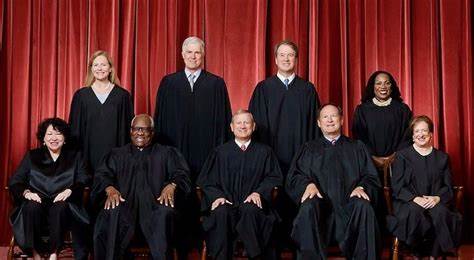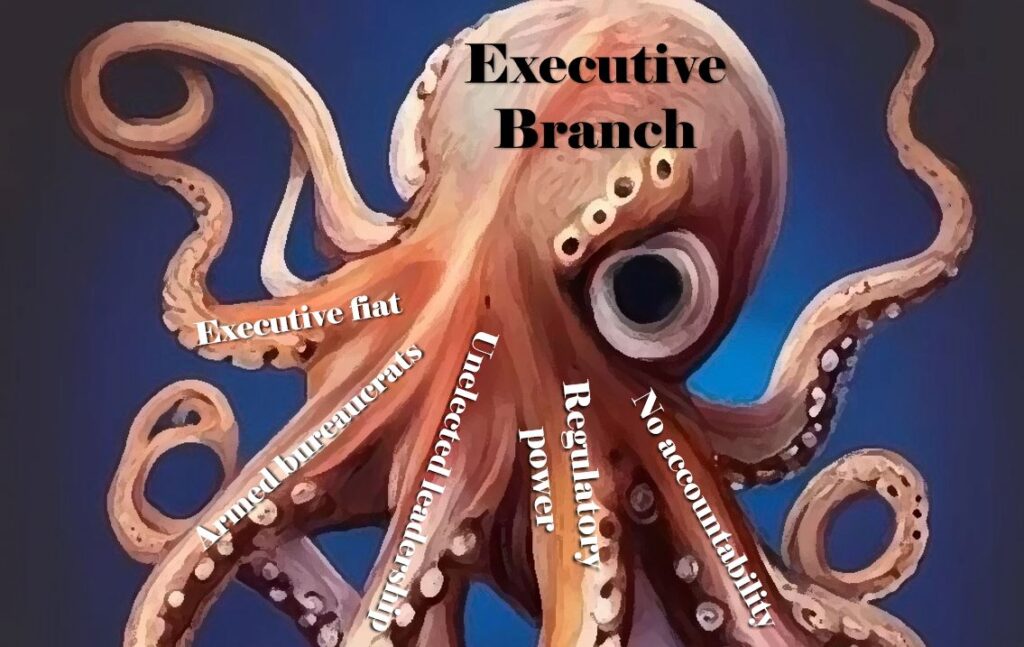Remember When the Judiciary was a Co-equal Branch of Government?
by RANGE contributor
Former Interior Secretary Dave Bernhardt’s new book, “You Report to Me,” is edifying for anyone trying to understand why government has become so intrusive, partisan, divisive, and dare I say, dysfunctional. It is a first-hand backgrounder on the evolution of the “administrative state,” with eye-opening examples that beg the question, who is really in charge of federal agencies?
Congress deserves scorn for delegating its legislative powers to executive branch agencies, which promulgate regulations with the same force of law as Acts of Congress. A “New Civil Liberties Alliance” report on the growth of “administrative law,” based on regulations imposed and enforced by executive branch agencies, concludes that “Americans accused of violations are now ten times more likely to be tried by an unelected bureaucrat than by a federal judge.” Indeed, the constitutional lines separating the three branches of government are almost nonexistent.
In a recently published posthumous memoir, “American Amnesia,” Helen Krieble writes about the founders’ vision of a system of “checks and balances,” with the three branches having “carefully divided responsibilities… Congress legislates, the President administers, and the courts provide independent judgment in contested cases. But the federal system no longer works that way. Today, the executive branch not only administers, but also makes laws, and sits in judgement. The courts not only sit in judgment, but also make laws, and enforce their judgments. Meanwhile, Congress has delegated most of its legislative authority to executive branch agencies.”
Bernhardt goes into even more detail, not only about Congress ceding its legislative authority to unelected officials, but about a similar phenomenon most writers have ignored. That is, the judicial branch doing the same thing. He argues that the “administrative state” has become all powerful because both other branches have delegated much of their constitutional responsibility to the executive branch.
It is easy to understand why politicians create regulatory agencies – to avoid voting on unpopular policies. My own view is that a vast number of federal rules and regulations would not exist if politicians had to vote on them. Elected officials at least occasionally have to walk down Main Street and face voters whose lives are affected by the laws they make. Civil service bureaucrats do not, so Congress sets up agencies like the EPA and says, in essence, “we want to stop pollution, now you decide how to do that.” They pass vague laws and leave the specifics to agency employees. Then, when such agencies decide to shut down domestic energy, ban gas stoves and air conditioners, and destroy entire industries like timber and coal, congressmen can tell their angry constituents, “I am outraged, too, and I’ve introduced a bill to stop that.” Bills they know will never see the light of day but provide “plausible deniability.”

Supreme Court justices are marginally more insulated from public opinion, but not immune to it, and have also tried to insulate themselves from unpopular rules. The landmark 1984 case Chevron v Natural Resources Defense Council established a highly controversial precedent that courts should defer to executive agencies in interpreting these vague laws. The ruling said, “Sometimes the legislative delegation to an agency on a particular question is implicit rather than explicit… Federal judges, who have no constituency, have a duty to respect legitimate policy choices made by those who do.”
Called “Chevron deference,” this doctrine has been used by the court to dodge all sorts of hot topics (it has been cited in 19,000 judicial opinions), while the power of unelected regulators has expanded into every aspect of daily life. Now, the high court has finally agreed to re-examine that precedent in a case called Loper Bright Enterprises v. Raimondo to be decided next spring. It is considered likely the court will re-establish its status as a co-equal branch of government, as understood since Marbury v Madison (1803), when Chief Justice John Marshall declared, “It is emphatically the province and duty of the judicial department to say what the law is.”
As Justice Neil Gorsuch recently wrote, Chevron deference, “permits executive bureaucracies to swallow huge amounts of core judicial and legislative power.” That’s because when courts defer to agencies’ interpretation of vague laws, they “introduce into judicial proceedings a systematic bias toward one of the parties.” In other words, the deck is stacked against anyone suing federal agencies, if the courts are already predetermined to defer to agency judgments.
Justice Clarence Thomas wrote that Chevron deference “wrests from Courts the ultimate interpretative authority ‘to say what the law is,’ and hands it over to the executive branch.” Liberal court observers, disingenuously, now take the pro-deference side of the argument. One opinion piece was headlined “New Supreme Court case seeks to make the nine justices even more powerful,” and claimed that the Court “has spent the last several years claiming the other two branches’ powers for itself.” That is precisely the problem with the whole notion of Chevron deference. Namely, that it is cited when convenient, and ignored when not.
The typical argument is explained by a frequent liberal court writer called Ian Millhiser, for instance, who says, “judges are not experts in the kind of hyper-technical questions that often come before federal agencies.” Except he and his allies are fine with ignoring the deference doctrine in cases where they agree with activist judges who set themselves up as “experts.” For instance, one judge thought he alone should decide whether a particular subspecies was still endangered, another ruled on whether a tiny isolated forest parcel in Montana was at risk of fire, and yet another on whether coal mining in one part of Wyoming would cause global warming. In those cases and dozens more, agency experts were overruled by judges’ political agendas, and Millhiser wrote nothing.
The issue before the courts should never be whether their own opinions are more valid than agency “experts.” It should simply be, what does the law say? The Court has clipped agency wings several times recently for pushing regulations not authorized by law, especially EPA. Cases invalidating EPA’s overreaching definition of “waters of the U.S.,” or its coal-killing scheme deceitfully dubbed the “clean power plan” come to mind. Now, the high court may finally be poised to end the whole notion of deference and start doing its job again.


